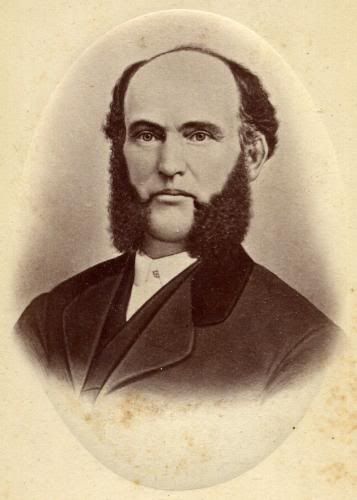
Sunday, December 19, 2010
Coca-Cola
Invented by drugstore owner John Pemberton, Coca-Cola originated in Columbus, Georgia as a coca wine called Pemberton's French Wine Coca. In 1886, Pemberton developed a non-alcoholic version in response to prohibition laws. Originally sold for five cents a glass, Coca-Cola was marketed as a cure-all. Pemberton claimed Coca-Cola cured morphine addiction, dyspepsia, neurasthenia, headache, and impotence. Asa Griggs Candler later acquired exclusive rights to Coca-Cola and established the Coca-Cola Company in 1892. At one time, Coca-Cola contained about nine milligrams of cocaine per glass, but in 1903 it was removed. Today, Coca-Cola remains an American icon.


Mata Hari
Margaretha Geertruida Zelle was born in the Netherlands in 1876. She attended exclusive private schools until she married at the age of 18. She answered an advertisement in a Dutch newspaper placed by Colonial Army officer Rudolf John MacLeod, who was searching for a wife. They were married in 1895 and moved to the Dutch East Indies, where Margaretha had two children. In the East Indies, the alcoholic MacLeod treated her badly and kept both a native wife and a concubine. As a release, Margaretha found enjoyment in studying local culture and took the name Mata Hari, Indonesian for "sun," literally "eve of the day."

After moving back to the Netherlands, the couple separated in 1902 and later divorced in 1906. Without custody, Mata Hari moved to Paris and found success as an exotic dancer. Following her debut at the Musee Guirmet in 1905, she became the mistress of its owner, millionaire Emile Etienne Guimet. Mata Hari's act was flirtatious and sensuous, and she was often pictured in semi-nude poses. She had relationships with several other prominent men, including the German crown prince. During World War I, Mata Hari traveled extensively between European countries, which caught the attention of British intelligence. She claimed to have been a spy for France, but this has never been confirmed. In 1917, Mata Hari was arrested as a double agent for Germany, found guilty, and executed by firing squad at the age of 41. Biographers have since argued that she was used as a scapegoat or pawn.

Interestingly, Mata Hari's body was donated to science and her head embalmed. The head was kept at the Museum of Anatomy in Paris, but, in 2000, archivists discovered it had disappeared, as had the rest of the body, which had later been donated after medical study. Mata Hari's remains are still missing.

After moving back to the Netherlands, the couple separated in 1902 and later divorced in 1906. Without custody, Mata Hari moved to Paris and found success as an exotic dancer. Following her debut at the Musee Guirmet in 1905, she became the mistress of its owner, millionaire Emile Etienne Guimet. Mata Hari's act was flirtatious and sensuous, and she was often pictured in semi-nude poses. She had relationships with several other prominent men, including the German crown prince. During World War I, Mata Hari traveled extensively between European countries, which caught the attention of British intelligence. She claimed to have been a spy for France, but this has never been confirmed. In 1917, Mata Hari was arrested as a double agent for Germany, found guilty, and executed by firing squad at the age of 41. Biographers have since argued that she was used as a scapegoat or pawn.

Interestingly, Mata Hari's body was donated to science and her head embalmed. The head was kept at the Museum of Anatomy in Paris, but, in 2000, archivists discovered it had disappeared, as had the rest of the body, which had later been donated after medical study. Mata Hari's remains are still missing.
Women Wearing Pants
In the Western part of the world, woman didn't start wearing pants until the late 1800s. During the Industrial Revolution, women starting wearing trousers to better facilitate movement. Victorian society was scandalized by Wigan pit brow girls, who worked in dangerous coal mines and wore trousers under their skirts. Similarly, ranch women in the West wore trousers for riding. Later, actresses Marlene Dietrich and Katharine Hepburn helped to popularize the fashion.

Wigan pit brow girl.

Wigan pit brow girl.
Deadwood, South Dakota
Let's step back from the extravagant Victorian England and take a journey across the pond to the Wild West. What better place to focus on than the illustrious Deadwood, South Dakota. Previously occupied by the Lakota tribe, Deadwood was settled in the 1870s following the Black Hills Gold Rush. The population rose quickly to 5,000, thanks to Deadwood's reputation for gambling and prostitution. Notable natives include gunslinger Wild Bill Hickok, frontierswoman Calamity Jane, and sheriff Seth Bullock. Known for its lawless reputation, Deadwood settled down in the late 1800s after the population began to dwindle. But the Deadwood we're familiar with is the one depicted in the HBO television series. Historians say Deadwood's depiction was generally accurate, however, I cannot find any evidence that Deadwood natives spoke a dialect similar to that of the Elizabethan era, as portrayed in the series. Still, American Southern and Western dialects do display pronunciations and words specific to the early modern English of Shakespeare's time.

The Gem saloon, circa 1878.

The Gem saloon, circa 1878.
The Hope Diamond
Last night, Titanic came on television and I watched it for the umpteenth time. I noticed similarities between the Hope Diamond and the Heart of the Ocean necklace in the movie. I found out that, contrary to popular belief following the release of Titanic, the Hope Diamond was never on the ill-fated ship.

Current day Hope Diamond.
Like many famous gems, the Hope Diamond was cut several times. The first version was known as the Tavernier Blue, a 115-carat crude triangular cut named after French merchant Jean-Baptiste Tavernier. Though Tavernier drew sketches of the diamond in his journal, he made no hint of its origin. One historian has suggested the diamond was acquired in 1653 from the Kollur mine in India. Regardless, Tavernier sold the diamond to King Louis XIV of France in 1669. Louis had the court jeweler recut the Tavernier Blue into the 67.125-carat Blue Diamond of the Crown, also known as the French Blue, which was fashioned into a cravat pin. Later, Louis XV created a more elaborate setting for a pendant for the Order of the Golden Fleece. During the French Revolution, many of the French crown jewels were stolen by thieves and the blue diamond was thought to be lost.

Sketch from Tavernier's journal.
Recently, however, it has been confirmed that the Hope Diamond was indeed cut from the French Blue. The Hope Diamond is consistent with early sketches and recorded dimensions of the French Blue. Before it was renamed the Hope Diamond, the gem was recorded in the possession of diamond merchant Daniel Eliason in 1812, over twenty years after the French Blue's disappearance. In 1839, the Hope Diamond appeared in a gem collection catalog published by Henry Philip Hope, a Dutch banker. It had been set in a simple medallion surrounded by small white diamonds. After Hope's death, the family fought for years over who got what. Henry Thomas Hope ended up with the blue diamond, which he put on display at The Great Exhibition of 1851. The Hope Diamond was kept in a vault until Henry's grandson fell into debt and sold the diamond in 1902 for what amounts to about 3.5 million dollars today. The Hope Diamond exchanged hands several times and, in 1910, was sold to Pierre Cartier, who then sold it to American socialite and mining heiress Evalyn Walsh McLean, owner of the Star of the East Diamond. After McLean's death, her family sold the Hope Diamond to Harry Winston in 1949. Ultimately, Winston donated it to the Smithsonian Institute, where it currently resides.

Evalyn Walsh McLean wearing the Hope Diamond.

Current day Hope Diamond.
Like many famous gems, the Hope Diamond was cut several times. The first version was known as the Tavernier Blue, a 115-carat crude triangular cut named after French merchant Jean-Baptiste Tavernier. Though Tavernier drew sketches of the diamond in his journal, he made no hint of its origin. One historian has suggested the diamond was acquired in 1653 from the Kollur mine in India. Regardless, Tavernier sold the diamond to King Louis XIV of France in 1669. Louis had the court jeweler recut the Tavernier Blue into the 67.125-carat Blue Diamond of the Crown, also known as the French Blue, which was fashioned into a cravat pin. Later, Louis XV created a more elaborate setting for a pendant for the Order of the Golden Fleece. During the French Revolution, many of the French crown jewels were stolen by thieves and the blue diamond was thought to be lost.

Sketch from Tavernier's journal.
Recently, however, it has been confirmed that the Hope Diamond was indeed cut from the French Blue. The Hope Diamond is consistent with early sketches and recorded dimensions of the French Blue. Before it was renamed the Hope Diamond, the gem was recorded in the possession of diamond merchant Daniel Eliason in 1812, over twenty years after the French Blue's disappearance. In 1839, the Hope Diamond appeared in a gem collection catalog published by Henry Philip Hope, a Dutch banker. It had been set in a simple medallion surrounded by small white diamonds. After Hope's death, the family fought for years over who got what. Henry Thomas Hope ended up with the blue diamond, which he put on display at The Great Exhibition of 1851. The Hope Diamond was kept in a vault until Henry's grandson fell into debt and sold the diamond in 1902 for what amounts to about 3.5 million dollars today. The Hope Diamond exchanged hands several times and, in 1910, was sold to Pierre Cartier, who then sold it to American socialite and mining heiress Evalyn Walsh McLean, owner of the Star of the East Diamond. After McLean's death, her family sold the Hope Diamond to Harry Winston in 1949. Ultimately, Winston donated it to the Smithsonian Institute, where it currently resides.

Evalyn Walsh McLean wearing the Hope Diamond.
Saturday, December 18, 2010
Dungeness at Cumberland Island
During my Christmas vacation, I will be visiting Cumberland Island on my way to Charleston, South Carolina. In researching for my trip, I found that, in addition to having wild horses, Cumberland Island was once home to a Carnegie estate.

The Carnegie Dungeness.
Cumberland Island is located on the coast of Georgia and is only accessible by ferry from St. Marys. Originally settled by Native Americans and later by Spanish missionaries, the small island was named after the Duke of Cumberland by English General James Oglethorpe when he arrived on the Georgia coast in 1733. Oglethorpe established a hunting lodge named Dungeness in 1736, which was eventually destroyed. The next Dungeness was designed by Revolutionary War hero Nathaniel Greene and built after his death by his widow in 1803. During the War of 1812, the four-story tabby mansion was used as British headquarters. Henry Lee III, father of Robert E. Lee, also lived and died there. Both Greene's widow and Lee maintained a plantation, and, in 1846, records show there were 36 white people and 400 slaves. The house was abandoned during the Civil War and burned in 1866. During the 1880s, Scottish industrialist Thomas M. Carnegie began building another Dungeness on the site. Construction was completed after Carnegie's death in 1886 and resulted in an 89-room Queen Anne mansion. The Carnegies, who previously owned 90% of the island, moved in 1925, and Dungeness was burned in 1959, reportedly due to arson. The ruins are currently preserved by the National Park Service.

Current day ruins of Dungeness.

The Carnegie Dungeness.
Cumberland Island is located on the coast of Georgia and is only accessible by ferry from St. Marys. Originally settled by Native Americans and later by Spanish missionaries, the small island was named after the Duke of Cumberland by English General James Oglethorpe when he arrived on the Georgia coast in 1733. Oglethorpe established a hunting lodge named Dungeness in 1736, which was eventually destroyed. The next Dungeness was designed by Revolutionary War hero Nathaniel Greene and built after his death by his widow in 1803. During the War of 1812, the four-story tabby mansion was used as British headquarters. Henry Lee III, father of Robert E. Lee, also lived and died there. Both Greene's widow and Lee maintained a plantation, and, in 1846, records show there were 36 white people and 400 slaves. The house was abandoned during the Civil War and burned in 1866. During the 1880s, Scottish industrialist Thomas M. Carnegie began building another Dungeness on the site. Construction was completed after Carnegie's death in 1886 and resulted in an 89-room Queen Anne mansion. The Carnegies, who previously owned 90% of the island, moved in 1925, and Dungeness was burned in 1959, reportedly due to arson. The ruins are currently preserved by the National Park Service.

Current day ruins of Dungeness.
Walter Potter, Victorian Taxidermist
I recently came across an article in The Daily Mail about a Victorian taxidermist named Walter Potter (1835-1918). Potter was a unique taxidermist, in that his stuffed animals were anthropomorphized in elaborate dioramas.

Walter Potter.
Reportedly, Potter's first attempt at taxidermy was an effort to preserve his deceased canary. His most famous diorama, "The Death and Burial of Cock Robin," included 98 species of British birds. Around 1860, Potter opened up his own museum to display his dioramas, which often depicted animals in human settings, like at a wedding or cricket match. Potter was noted for his attention to detail; one museum-goer commented, "The kittens even wear frilly knickers under their formal attire!"

Rabbits in school.
By Potter's death in 1914, his collection, known as "Mr. Potter's Museum of Curiosities," included over 10,000 specimens. As Victorian whimsy declined, so too did Potter's museum, thanks in part to developing awareness of animal cruelty. Modern curators felt inclined to post notices saying that all animals had died of natural causes and, "in any case, they were all over 100 years old." The museum closed in the 1970s, and the collection was sold intact in 1984 and later in pieces in 2003. Many of the dioramas are currently on exhibition at The Museum of Everything in Primrose Hill, London.

Kittens at a tea party.

Walter Potter.
Reportedly, Potter's first attempt at taxidermy was an effort to preserve his deceased canary. His most famous diorama, "The Death and Burial of Cock Robin," included 98 species of British birds. Around 1860, Potter opened up his own museum to display his dioramas, which often depicted animals in human settings, like at a wedding or cricket match. Potter was noted for his attention to detail; one museum-goer commented, "The kittens even wear frilly knickers under their formal attire!"

Rabbits in school.
By Potter's death in 1914, his collection, known as "Mr. Potter's Museum of Curiosities," included over 10,000 specimens. As Victorian whimsy declined, so too did Potter's museum, thanks in part to developing awareness of animal cruelty. Modern curators felt inclined to post notices saying that all animals had died of natural causes and, "in any case, they were all over 100 years old." The museum closed in the 1970s, and the collection was sold intact in 1984 and later in pieces in 2003. Many of the dioramas are currently on exhibition at The Museum of Everything in Primrose Hill, London.

Kittens at a tea party.
Art Nouveau in Riga, Latvia
If you're unfamiliar with art nouveau, let me fill you in. French for "new art," art nouveau was an international movement popular at the turn of the twentieth century. It's also known as "Stile Liberty" in Italy and, in Germany, "Jugendstil" (Youth Style). Art nouveau is epitomized by floral motifs and curved lines. The art genre was especially influenced by Czech artist Alphonse Mucha. Other contributors include Hector Guimard, Emile Galle, Victor Horta, Gustav Klimt, Charles Rennie Mackintosh, Rene Lalique, Antoni Guadi, and Louis Comfort Tiffany.

Alphonse Mucha print.
Probably the best examples of art nouvea architecture can be found in Riga, the capital of Latvia. At the turn of the twentieth century, over 40% of the buildings were built in this style.
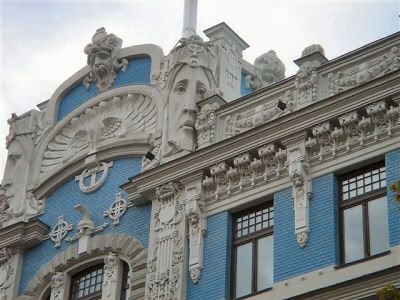
Facade of a building in Riga.
Today, the relatively obscure city of Riga is a United Nations Educational, Scientific and Cultural Organization (UNESCO) heritage site for its stunning art nouveau architecture.

An art nouveau staircase in Riga.

Alphonse Mucha print.
Probably the best examples of art nouvea architecture can be found in Riga, the capital of Latvia. At the turn of the twentieth century, over 40% of the buildings were built in this style.

Facade of a building in Riga.
Today, the relatively obscure city of Riga is a United Nations Educational, Scientific and Cultural Organization (UNESCO) heritage site for its stunning art nouveau architecture.

An art nouveau staircase in Riga.
Little Prince John
John Charles Francis was the youngest song of King George V and Queen Mary. The story of Prince John is a sad one. John was born in 1905 as sixth in line to the throne and godson of the King of Portugal, Duke and Duchess of Sparta, Princess Alexander of Teck, King Haakon VII of Norway, the Duke of Fife, and Prince Johann of Schleswig-Holstein-Sonderburg-Glucksburg, the little prince's namesake.

Prince John with mother and four brothers.
John was kept from attending his father's coronation in 1911 due to the effects of his first epileptic seizure a the age of four. As his health continued to deteriorate, John was moved to the countryside and, at the age of twelve, given his own household, Wood Farm at Sandringham Estate. Though he was largely kept from the public eye, John was visited often by family and enjoyed a relatively idyllic childhood. His activities included reading, horseback riding, gardening, playing with companion Winifred Thomas, and riding around in a pedal car and toy train.

Prince John at Wood Farm.
Sadly, in 1919, John died after becoming unconscious due to a violent seizure. An entry in Queen Mary's diary reads:
"Lalla Bill [the nanny] telephoned from Wood Farm, Wolferton, that our poor darling Johnnie had died suddenly after one of his attacks. The news gave me a great shock, though for the little boy's restless soul, death came as a great release. I brought the news to George & we motored down to Wood Farm. Found poor Lalla very resigned but heartbroken. Little Johnnie looked very peaceful lying there ... For him it is a great release as his malady was becoming worse as he grew older and he has thus been spared much suffering. I cannot say how grateful we feel to God for having taken him in such a peaceful way, he just slept quietly... no pain, no struggle, just peace for the poor little troubled spirit, which had been a great anxiety for us for many years ever since he was four."

Prince John with Queen Mary.
Much of John's life and character remains a mystery, but it is safe to say that he was a kind, gentle, and sweet-hearted little prince loved by all who came into contact with him. Though his life was short, his memory survives, as illustrated by the 2003 film The Lost Prince and the documentary Prince John: The Windsors' Tragic Secret.

Prince John with mother and four brothers.
John was kept from attending his father's coronation in 1911 due to the effects of his first epileptic seizure a the age of four. As his health continued to deteriorate, John was moved to the countryside and, at the age of twelve, given his own household, Wood Farm at Sandringham Estate. Though he was largely kept from the public eye, John was visited often by family and enjoyed a relatively idyllic childhood. His activities included reading, horseback riding, gardening, playing with companion Winifred Thomas, and riding around in a pedal car and toy train.

Prince John at Wood Farm.
Sadly, in 1919, John died after becoming unconscious due to a violent seizure. An entry in Queen Mary's diary reads:
"Lalla Bill [the nanny] telephoned from Wood Farm, Wolferton, that our poor darling Johnnie had died suddenly after one of his attacks. The news gave me a great shock, though for the little boy's restless soul, death came as a great release. I brought the news to George & we motored down to Wood Farm. Found poor Lalla very resigned but heartbroken. Little Johnnie looked very peaceful lying there ... For him it is a great release as his malady was becoming worse as he grew older and he has thus been spared much suffering. I cannot say how grateful we feel to God for having taken him in such a peaceful way, he just slept quietly... no pain, no struggle, just peace for the poor little troubled spirit, which had been a great anxiety for us for many years ever since he was four."

Prince John with Queen Mary.
Much of John's life and character remains a mystery, but it is safe to say that he was a kind, gentle, and sweet-hearted little prince loved by all who came into contact with him. Though his life was short, his memory survives, as illustrated by the 2003 film The Lost Prince and the documentary Prince John: The Windsors' Tragic Secret.
What Child Is This
Everyone is probably familiar with the haunting Christmas-time song "What Child Is This." What you may not know is that the song, which can be found in Catholic and Anglican hymnals, has a surprising association with prostitution.

Victorian Christmas.
The lyrics of "What Child Is This" are set to the tune of "Greensleeves," a traditional English song which dates back to 1580. The lyrics depict a jilted lover who calls his his lady love "Greensleeves." One popular interpretation of the song is that it is written about a prostitute. Around this time, "green" was a sexually explicit word, and some say the "green gown" described in the song refers to grass stains. Another interpretation is that "Greensleeves" was written for King Henry's consort Anne of Boleyn.

Anne Boleyn and Henry.
In 1865, William Chatterton Dix adapted the tune of "Greensleeves" and wrote the lyrics for "What Child Is This" following a near-death experience. Dix was the manager of an insurance company in Glasgow and penned several other Anglican hymns including "As with Gladness Men of Old," "To you, O Lord, our hearts we raise," and "Alleluia! Sing to Jesus."
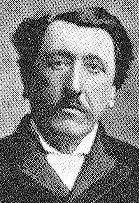
Dix.

Victorian Christmas.
The lyrics of "What Child Is This" are set to the tune of "Greensleeves," a traditional English song which dates back to 1580. The lyrics depict a jilted lover who calls his his lady love "Greensleeves." One popular interpretation of the song is that it is written about a prostitute. Around this time, "green" was a sexually explicit word, and some say the "green gown" described in the song refers to grass stains. Another interpretation is that "Greensleeves" was written for King Henry's consort Anne of Boleyn.

Anne Boleyn and Henry.
In 1865, William Chatterton Dix adapted the tune of "Greensleeves" and wrote the lyrics for "What Child Is This" following a near-death experience. Dix was the manager of an insurance company in Glasgow and penned several other Anglican hymns including "As with Gladness Men of Old," "To you, O Lord, our hearts we raise," and "Alleluia! Sing to Jesus."

Dix.
Mutton Chops
Mutton chops is just another phrase for extravagant sideburns. One of the earliest depictions of sideburns is found in a Pompeiian mosaic of Alexander the Great. During the 1700s, beards and sideburns saw popularity worldwide, especially in South America.
Mutton chops are usually associated with Victorian men who sported abnormally long sideburns. Mutton chops fell out of fashion in the early 1900s. Furthermore, wearing gas masks in the first world war required a clean shaven face, with the exception of short mustaches.
In modern British slang, sideburns and handlebar mustaches are referred to as "buggers handles," buggers-grips," or "buggery-grips."
Mutton chops are usually associated with Victorian men who sported abnormally long sideburns. Mutton chops fell out of fashion in the early 1900s. Furthermore, wearing gas masks in the first world war required a clean shaven face, with the exception of short mustaches.
In modern British slang, sideburns and handlebar mustaches are referred to as "buggers handles," buggers-grips," or "buggery-grips."
Sunday, December 5, 2010
Recent eBay/Etsy Purchases
I've been browsing potential Christmas presents on eBay and Etsy lately and came across some keepers! My mother is an Episcopal priest and bibliophile. For her, I found this 1867 Protestant Episcopal Book of Common Prayer.

Front cover.

Inscription dated 1880.

Titlepage.
Interestingly, the American Episcopal church originally chose to distinguish themselves as apart from England and therefore Protestant, but, in the mid-1800s, some members called to remove the word "protestant" as the break from the Catholic church had nothing to do with the Protestant Reformation. My mother often likes to point out that we are neither Catholic nor Protestant; we're Anglican. :)
In searching for presents for my dad, I stumbled upon an old postcard from Bribir, a medieval city in Croatia from whence his family hails. In the past, I had never been able to find anything from Bribir online, but at last I have! Bribir is sort of an obscure little village, so it was amazing that I was able to find this.

Dated 1901.
I also purchased a Croatian banknote from 1991, the year Croatia became an independent country after Yugoslavia. I've always been interested in foreign currency, and I thought this one was kind of special.

10 dinara banknote. In 1993, 700,000 dinaras = $1 U.S.
Another purchase I made was an 1886 print from Oliver Goldsmith's A History of the Earth and Animated Nature. It's in great condition and the colors are vivid. I plan to have it framed for my boyfriend, a duck hunting enthusiast.

In the foreground: Teal, Harlequin, Scaup, and Red Headed Pochard ducks.
Lastly, I found something for me. I have recently become interested in Victorian beetle jewelry, and I've been trying to find an affordable piece for a while. At perhaps the height of Egyptology, Victorians made a number of things out of scarabs, including jewelry. I've seen bracelets, necklaces, hatpins, etc. but none have every fit into my budget. However, I did find this relatively cheap stickpin.



I know it's kind of gross/weird, but I think it's so cool. And they're pretty rare as well, due to brittleness, so I'm lucky that it even exists!
Beetle mania

Front cover.

Inscription dated 1880.

Titlepage.
Interestingly, the American Episcopal church originally chose to distinguish themselves as apart from England and therefore Protestant, but, in the mid-1800s, some members called to remove the word "protestant" as the break from the Catholic church had nothing to do with the Protestant Reformation. My mother often likes to point out that we are neither Catholic nor Protestant; we're Anglican. :)
In searching for presents for my dad, I stumbled upon an old postcard from Bribir, a medieval city in Croatia from whence his family hails. In the past, I had never been able to find anything from Bribir online, but at last I have! Bribir is sort of an obscure little village, so it was amazing that I was able to find this.

Dated 1901.
I also purchased a Croatian banknote from 1991, the year Croatia became an independent country after Yugoslavia. I've always been interested in foreign currency, and I thought this one was kind of special.

10 dinara banknote. In 1993, 700,000 dinaras = $1 U.S.
Another purchase I made was an 1886 print from Oliver Goldsmith's A History of the Earth and Animated Nature. It's in great condition and the colors are vivid. I plan to have it framed for my boyfriend, a duck hunting enthusiast.

In the foreground: Teal, Harlequin, Scaup, and Red Headed Pochard ducks.
Lastly, I found something for me. I have recently become interested in Victorian beetle jewelry, and I've been trying to find an affordable piece for a while. At perhaps the height of Egyptology, Victorians made a number of things out of scarabs, including jewelry. I've seen bracelets, necklaces, hatpins, etc. but none have every fit into my budget. However, I did find this relatively cheap stickpin.



I know it's kind of gross/weird, but I think it's so cool. And they're pretty rare as well, due to brittleness, so I'm lucky that it even exists!
Beetle mania
Thursday, November 18, 2010
Popular Victorian Lapdogs
By the 1800s, lapdogs had long been synonymous with ladies of fashion. Victorian women favored short-hair "toy" breeds because they could be taken everywhere and didn't shed on furniture or clothing. According to Victoriana.com, popular dogs of the time were the Yorkshire terrier, Skye terrier, Schipperke, Maltese, King Charles Cavalier, Blenheim spaniel, Pug, and Greyhound toy. Lapdogs were treated as almost an extension of a ladies clothing and were treated as a well-maintained accessory. The Victorian lapdog's diet was strict and extravagant and its coat groomed several times a day. Devoted owners even had pictures taken of them, which was quite an expense at the time. I've posted a few of my favorites below. Enjoy!

Woman with a Pekinese, 1908.

Daguerrotype of a lapdog (above) and greeting card (below) from AntiquePooch.com

Caption: "Wee Willie Winkie."

Woman with a Pekinese, 1908.

Daguerrotype of a lapdog (above) and greeting card (below) from AntiquePooch.com

Caption: "Wee Willie Winkie."
Wednesday, November 17, 2010
Vita Sackville-West
As I said in my first post, in addition to the Victorian time period, I am also interested in the Edwardian era. While Vita Sackville-West was born at the end of the 1800s and perhaps does not qualify as Edwardian, she did write a novel called The Edwardians and her life is rather fascinating, so I can't help but include her here.

Philip de Laszlo portrait painted in 1910.
I first came across Vita while doing a little research on Virginia Woolf. Supposedly, the two were lovers...but I'm getting ahead of myself. Victoria Mary Sackville-West was born in 1892 to Baron Sackville of Kent. While attending Woolf's school, Vita met her first love, Rosemund Grosvenor, at the age of seven. Their relationship ended when Vita was married to politician and author Harold Nicolson in 1913.

Harold and Vita in old age.
That is not to say that, after her marriage, she didn't continue to have affairs with women; Harold was bisexual as well, and the two had an open marriage which lasted until Vita's death in 1962. Her affair with novelist Violet Trefusis was perhaps the longest and most serious. Though both women were married, they would frequently escape to France, where Vita, dressed in men's clothing, would pretend to be a young man. She had other affairs with prominent women of the time, but none so famous as Virginia Woolf. According to Vita's son Nigel, Woolf's novel Orlando (assumedly addressed to his mother) is "the longest and most charming love-letter in literature."
Vita had two children: Nigel, who would become a writer and politician like his father, and Benedict, an art historian. After returning to England from Spain in the 1930s, the family acquired Sissinghurst Castle, where Vita immersed herself in gardening. The gardens at Sissinghurst are still renowned as being one of the most beautiful in England.

Modern day gardens of Sissinghurst in Kent.
Most importantly, Vita Sackville-West was a writer. She published 17 novels, 6 nonfiction books (including a biography on Joan of Arc), and 11 volumes of poetry. Her most famous novels are The Edwardians and All Passion Spent, which was made into a film by the BBC in 1986. Vita won the Hawthorne Prize for her poem The Land in 1927 and again in 1933 for her Collected Poems. She is currently the only writer to have ever won the award twice.
A Selection of Sackville-West's Poems

Philip de Laszlo portrait painted in 1910.
I first came across Vita while doing a little research on Virginia Woolf. Supposedly, the two were lovers...but I'm getting ahead of myself. Victoria Mary Sackville-West was born in 1892 to Baron Sackville of Kent. While attending Woolf's school, Vita met her first love, Rosemund Grosvenor, at the age of seven. Their relationship ended when Vita was married to politician and author Harold Nicolson in 1913.

Harold and Vita in old age.
That is not to say that, after her marriage, she didn't continue to have affairs with women; Harold was bisexual as well, and the two had an open marriage which lasted until Vita's death in 1962. Her affair with novelist Violet Trefusis was perhaps the longest and most serious. Though both women were married, they would frequently escape to France, where Vita, dressed in men's clothing, would pretend to be a young man. She had other affairs with prominent women of the time, but none so famous as Virginia Woolf. According to Vita's son Nigel, Woolf's novel Orlando (assumedly addressed to his mother) is "the longest and most charming love-letter in literature."
Vita had two children: Nigel, who would become a writer and politician like his father, and Benedict, an art historian. After returning to England from Spain in the 1930s, the family acquired Sissinghurst Castle, where Vita immersed herself in gardening. The gardens at Sissinghurst are still renowned as being one of the most beautiful in England.

Modern day gardens of Sissinghurst in Kent.
Most importantly, Vita Sackville-West was a writer. She published 17 novels, 6 nonfiction books (including a biography on Joan of Arc), and 11 volumes of poetry. Her most famous novels are The Edwardians and All Passion Spent, which was made into a film by the BBC in 1986. Vita won the Hawthorne Prize for her poem The Land in 1927 and again in 1933 for her Collected Poems. She is currently the only writer to have ever won the award twice.
A Selection of Sackville-West's Poems
Saturday, November 6, 2010
The Astor House
Next semester I'm taking a class on William James (1842-1910), psychologist/ philosopher/ doctor and brother of writer Henry James. While googling him, I learned William James was born at the Astor House, or Astor Hotel, in New York City. Funded by John Jacob Astor, the Astor House was built on accumulated lots surrounding his former home. While this post is dedicated to the hotel, I ran across some photographs of John Jacob Astor's own home I just have to share...
From a book on Fifth Avenue, excerpted here:
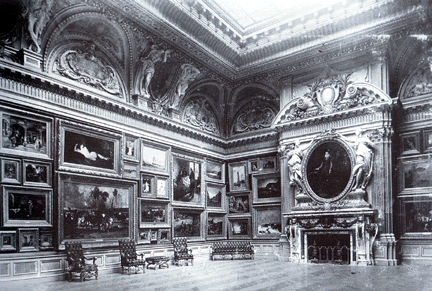
From an entry on Astor, a hero of the RMS Titanic, on Encyclopedia Titanica:

Anyway, the hotel was located on Broadway and opened in 1836. The Astor House was designed by Isaiah Rogers in the Greek Revival style, complete with huge doric columns, gas lights, a cast-iron rotunda, 6 stories, and over 300 rooms. The Astor House became the most fashionable place to eat lunch for wealthy gentlemen. However, after inspiring competitors, it was later regarded as old-fashioned and middle class. In 1913, the south section of the Astor House was torn down to make way for the subway, and the rest of the hotel was demolished in 1926. Still, the Astor House remains a legend in literature and New York memorabilia.
1905: St. Paul's Chapel, The Astor House, and the U.S. Post Office.
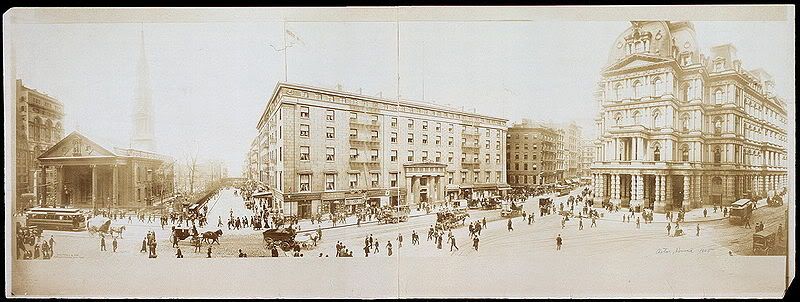
A stereoscope view of the Astor House.

In addition to William James, other famous people associated with the Astor House are Henry Wadsworth Longfellow (who honeymooned there), Charles Evans Hughes, Fanny Kemble, Abraham Lincoln, and Confederate Admiral Rapheal Semmes.
From a book on Fifth Avenue, excerpted here:

From an entry on Astor, a hero of the RMS Titanic, on Encyclopedia Titanica:

Anyway, the hotel was located on Broadway and opened in 1836. The Astor House was designed by Isaiah Rogers in the Greek Revival style, complete with huge doric columns, gas lights, a cast-iron rotunda, 6 stories, and over 300 rooms. The Astor House became the most fashionable place to eat lunch for wealthy gentlemen. However, after inspiring competitors, it was later regarded as old-fashioned and middle class. In 1913, the south section of the Astor House was torn down to make way for the subway, and the rest of the hotel was demolished in 1926. Still, the Astor House remains a legend in literature and New York memorabilia.
1905: St. Paul's Chapel, The Astor House, and the U.S. Post Office.

A stereoscope view of the Astor House.

In addition to William James, other famous people associated with the Astor House are Henry Wadsworth Longfellow (who honeymooned there), Charles Evans Hughes, Fanny Kemble, Abraham Lincoln, and Confederate Admiral Rapheal Semmes.
Godey's Lady's Book
I became familiar with this magazine last year while researching American female authors around the turn of the 20th century. Godey's Lady's Book was a popular monthly magazine that covered women's interests and included clothing patterns, gossip, engravings, and short stories/poetry (often written by women). There were, however, no political or controversial pieces. Published by Louis A. Godey in Philadelphia, the magazine ran from 1830 to 1878. Godey began copyrighting each issue to dissuade piracy in 1845, this being the first instance of magazine copyright in America. Noted Godey contributors are: Edgar Allen Poe, Nathaniel Hawthorne, Oliver Wendell Holmes, Washington irving, and (a favorite author of mine) Frances Hodgson Burnett. (Burnett's first short story "Hearts and Diamonds" was published in an 1868 issue of Godey's.)
Recently, I browsed eBay for Godey's and came upon an issue from 1889 for only $20. Naturally, I bought it. Here are some pictures:
"A magazine devoted to the interests of the family... $2 a year."
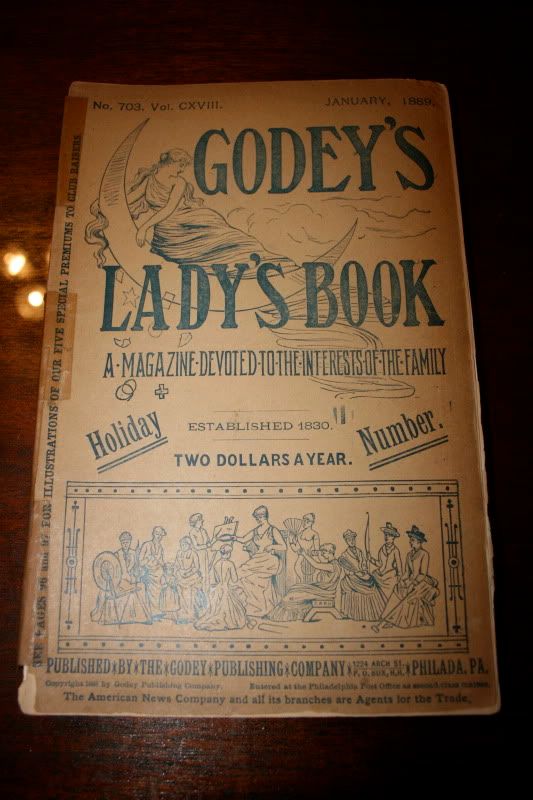
Hand-colored engravings of popular millinery.
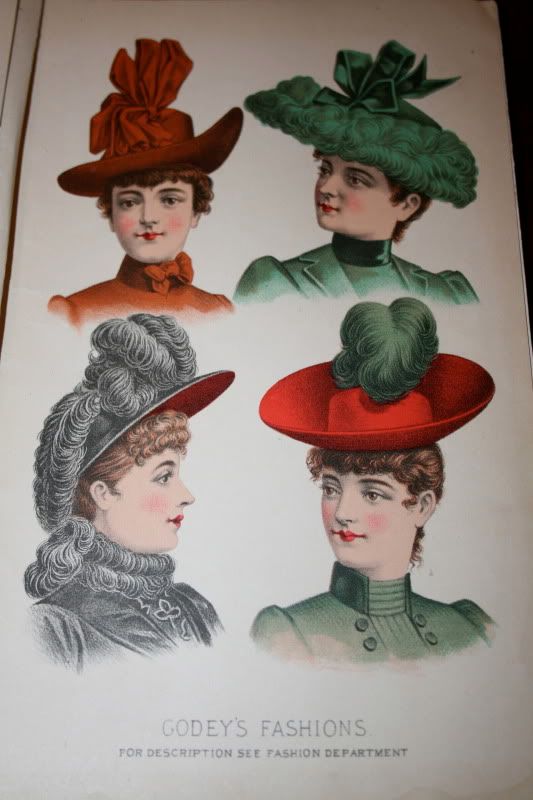
Three-story house plan.
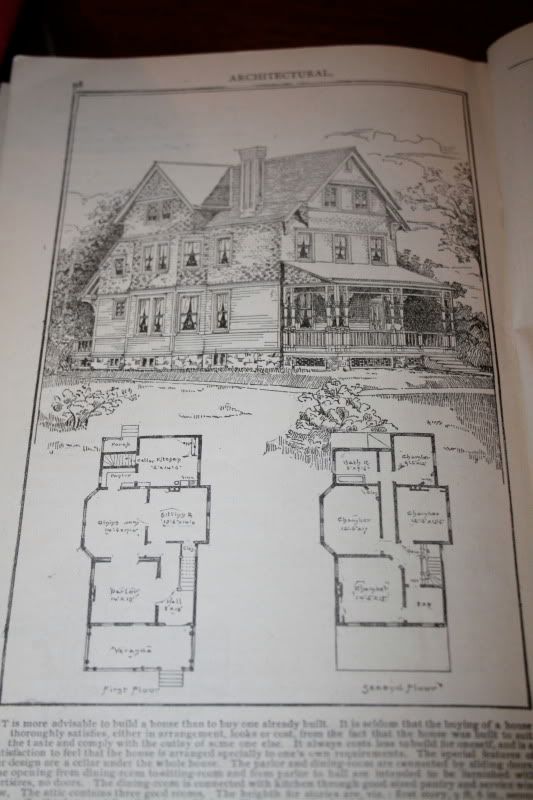
A fold-out tea cozy pattern.

Prizes offered to readers who attract more subscribers: an organ (?), a sewing machine, dress material, and a time-piece.

The pages are brittle but the colors are surprisingly brilliant for a magazine over 120 years old!
If you're interested in reading some of the material from Godey's, I've found a few websites on Google that have entire issues, like this one. Also, if you're a member of a library (especially a university), you may be able to view actual copies or electronic versions.
Recently, I browsed eBay for Godey's and came upon an issue from 1889 for only $20. Naturally, I bought it. Here are some pictures:
"A magazine devoted to the interests of the family... $2 a year."

Hand-colored engravings of popular millinery.

Three-story house plan.

A fold-out tea cozy pattern.

Prizes offered to readers who attract more subscribers: an organ (?), a sewing machine, dress material, and a time-piece.

The pages are brittle but the colors are surprisingly brilliant for a magazine over 120 years old!
If you're interested in reading some of the material from Godey's, I've found a few websites on Google that have entire issues, like this one. Also, if you're a member of a library (especially a university), you may be able to view actual copies or electronic versions.
Paris Flat Unopened For 70 Years
I stumbled across this story on The Paris Apartment blog (full story here):

An apartment that had been unopened for over 70 years was recently discovered in Paris. The owner had left France before WII and never returned. "Entering the untouched, cobweb-filled flat in Paris’ 9th arrondissement, one expert said it was like stumbling into the castle of Sleeping Beauty, where time had stood still since 1900." In the apartment was a lost Boldini portrait of the owner's grandmother, Marthe de Florian, an actress. The painting sold for $2.1 million.


An apartment that had been unopened for over 70 years was recently discovered in Paris. The owner had left France before WII and never returned. "Entering the untouched, cobweb-filled flat in Paris’ 9th arrondissement, one expert said it was like stumbling into the castle of Sleeping Beauty, where time had stood still since 1900." In the apartment was a lost Boldini portrait of the owner's grandmother, Marthe de Florian, an actress. The painting sold for $2.1 million.

Subscribe to:
Comments (Atom)
